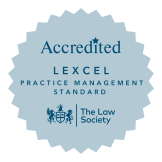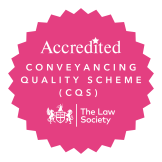A patent application will only be granted if it meets certain criteria. In particular, the invention that is defined by the claims of the application (which are the claims that set out the intended scope of patent protection) must be considered to be both new and not obvious compared to what is already in the public domain.
If an initial patent application is found not to be patentable, then the applicant will have the opportunity to submit arguments and amend their application in order to increase its chances of being granted.
The correct patent prosecution strategy is important, first to ensure that the patent application is granted and second to adequately protect the invention for which patent protection is sought.
How do you prosecute a patent?
“Patent prosecution” is defined as the progress of the application from filing, through the search and examination procedures, and on through publication to eventual grant or refusal.
Once filed, the jurisdiction examining your application (for example, the UK Intellectual Property Office (UKIPO), European Patent Office (EPO), or United States Patent and Trademark Office (USPTO)) will undertake a patent search to look for relevant ‘prior art’.
Prior art comprises earlier disclosures that fall within the breadth of claims included in your application. Such disclosures can be drawn from the archive of previous patent applications or be ‘real world’ disclosures, such as websites, product catalogues, or examples of the previous use of a product or process.
Once the search has been completed, the jurisdiction will examine your application, taking into account the jurisdiction’s patent law, and decide whether or not your patent application will be granted.
Should your claims not be considered patentable, the jurisdiction will raise objections, and if these are not overcome, the application will be refused. An objection is not necessarily the end of the road, however, as you have the option to amend your application so that it defines an invention that does meet the patentability criteria.
What is patent prosecution strategy?
The patent prosecution strategy that you adopt must take into account many different and often competing interests.
Your initial application must be broad enough to cover all aspects and variations of what you believe to be your invention, and this must be properly supported by the text of your application, for instance, by describing different examples and alternatives.
This is to ensure that you cover not only the full spectrum of products or processes that incorporate the invention but also any products or processes that you (or, just as importantly, your competitors!) might envisage in the future.
Furthermore, you might wish to broaden your claims to ‘flush out’ all the relevant prior art; this will give you the fullest possible idea of what is already in the public domain and which disclosures you will need to claim around. In reality, it is rare that applications proceed straight to grant. If they do, it might suggest you have not been bold enough in defining your invention!
Once you are in receipt of a search and/or examination report, strategy is important in terms of what amendments you make and when. For example, the examiner may have found prior art that discloses the broadest concept that you have claimed but which does not detail certain aspects of your invention.
Let’s say you have developed a new manufacturing process that includes Steps A, B, C and D. You initially claim just Steps A and B because you believe these are the new and not obvious features. The examiner conducts a search and finds prior art in the form of a prior-published patent specification that shows a process including your steps A and B. An objection is raised because the prior art shows that steps A and B are not new.
You may then decide to claim Steps A, B and C. If Step C provides some particular advantages not known from the prior art, then it could be argued that this new claim is not obvious. Alternatively, you might wish to claim Steps A, B and D or A, B, C and D.
Sometimes, the patent examiner might have put forward objections that you do not agree with, such as misinterpreting the meaning of one of the prior art documents. In such instances, you may wish to argue rather than amend. At the same time, you will be trying to convince the examiner of your position.
In some circumstances, you may wish to concede certain points to get the examiner on board and then hope to stand a better chance of succeeding with other arguments against different objections.
What are divisional applications?
A single patent application can be divided into multiple applications, each with different claims, so long as all the claims are based on the original application. There are several reasons why this might become important.
Using the example above, the examiner might find prior art showing steps A and B of your process and a different document showing Steps A and C (arguing that Step B is routine and obvious) and grant you a patent based on Steps A, B, C, and D. A quick win would be to limit the claims to what the examiner suggests and get the patent grant.
On the other hand, you might know that your competitor is working towards Steps A, B, C, and E or that you are developing Steps F, G, and H as alternatives to Step D. Therefore, your patent covering Steps A-D would only cover your original process, not any later developments, nor your competitor’s process.
Therefore, a strategy might be to ensure a swift patent grant with Steps A-D but then to file a divisional application directed to Steps A-C and be prepared to argue with the examiner for the broader claims. This takes longer but ultimately may leave you in a stronger position.
How much does it cost to prosecute a patent?
Of course, cost is a further consideration. In an ideal world, you would be able to argue on multiple occasions and file divisional applications covering a range of different aspects of the invention if they could not be covered by a single application. But this has a cost implication, and sometimes, a pragmatic view will have to be taken. This is all part of the patent prosecution strategy. Our intellectual property experts and patent attorneys will be able to advise you on likely costs on a case-by-case basis.
Our specialist patent attorneys and intellectual property lawyers will draft your initial Patent Application and file it in the jurisdictions of choice. Most importantly, we will advise you every step of the way, explaining the search and examination process and giving expert assistance all the way through to the eventual, hoped-for grant of the patent. Our patent attorneys can act directly in front of the UK and European Patent Offices and are able to work in other jurisdictions all over the world by utilising international systems and a highly developed network of foreign agents. To date, we have filed patent applications in over 160 countries, which gives us a far greater breadth of international experience than any of our regional competitors.










